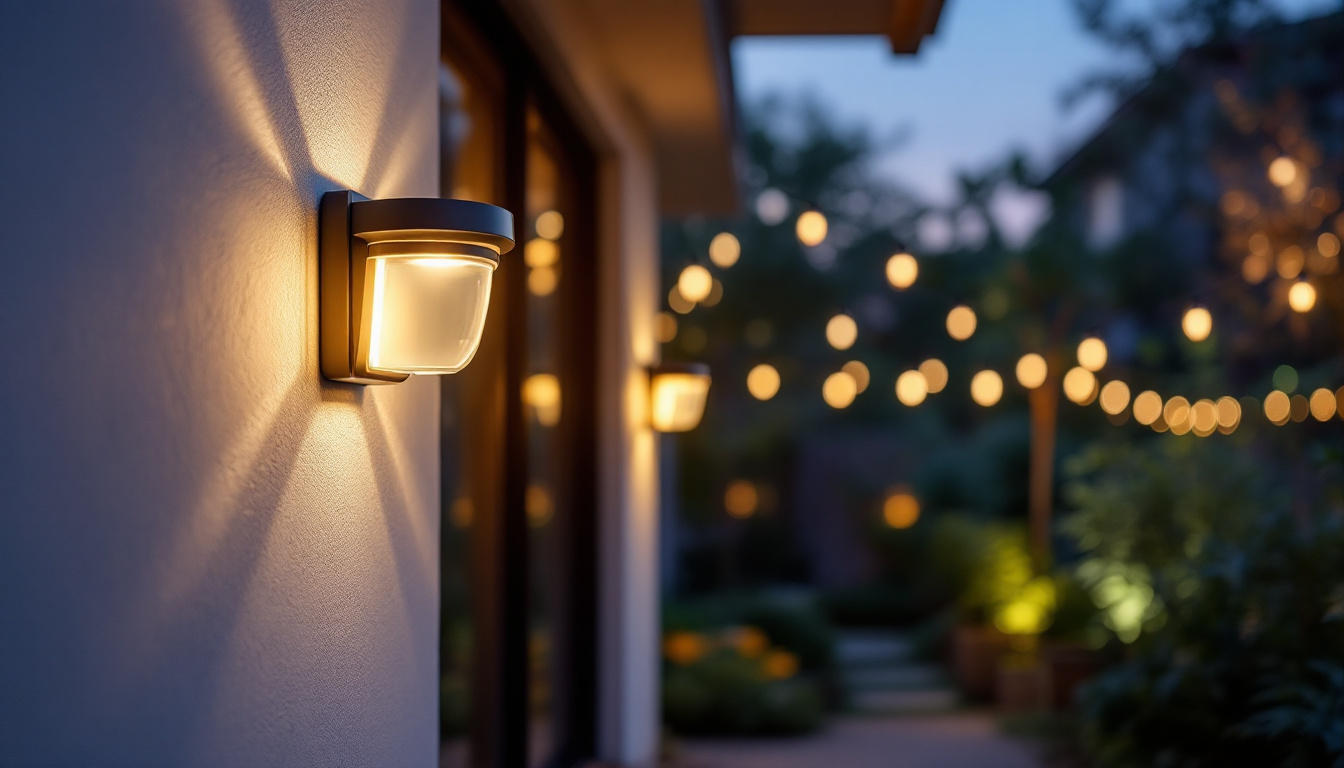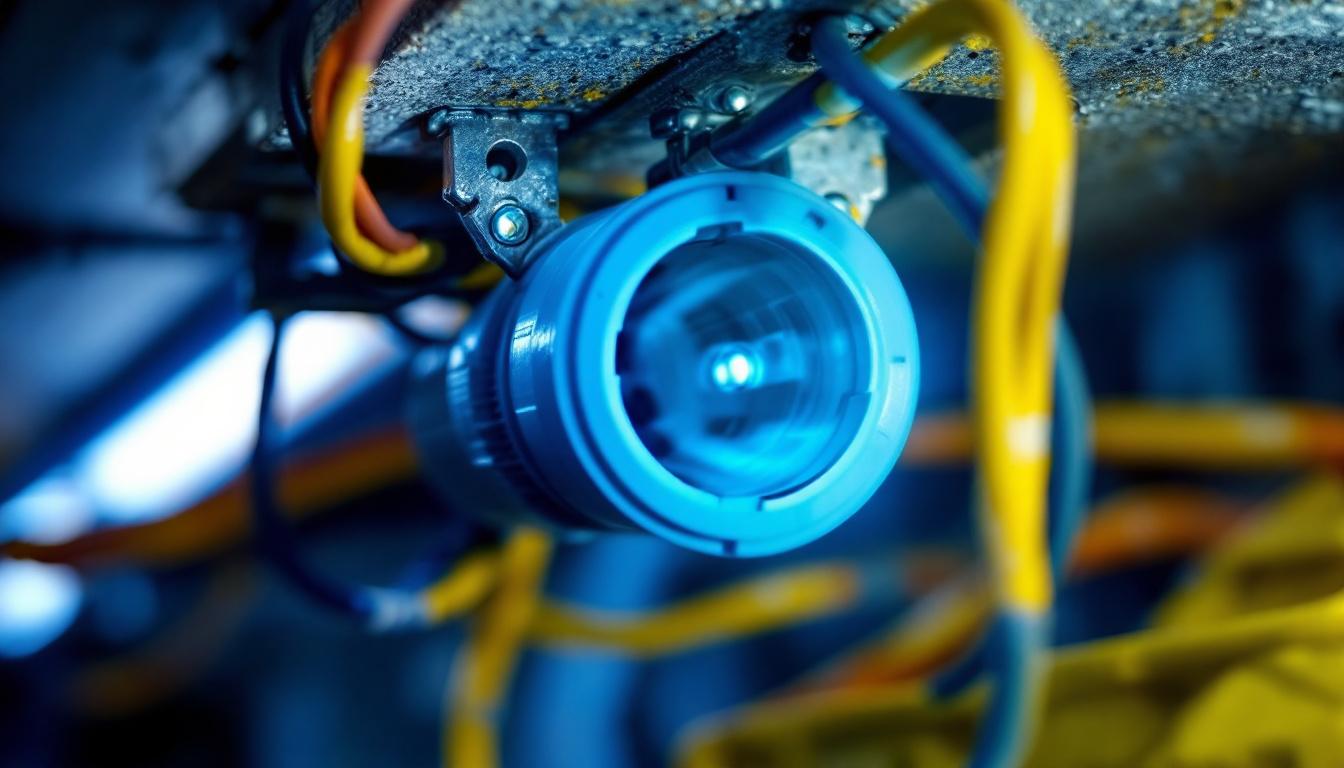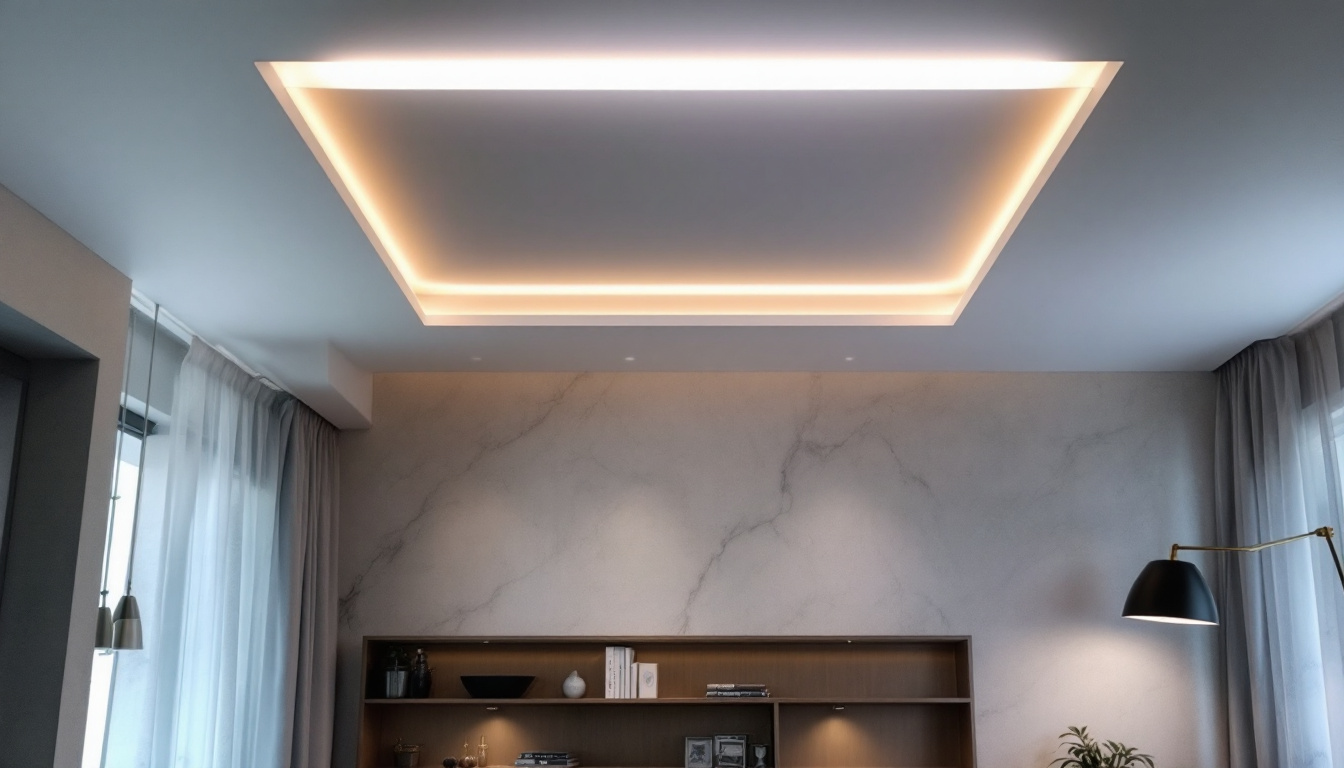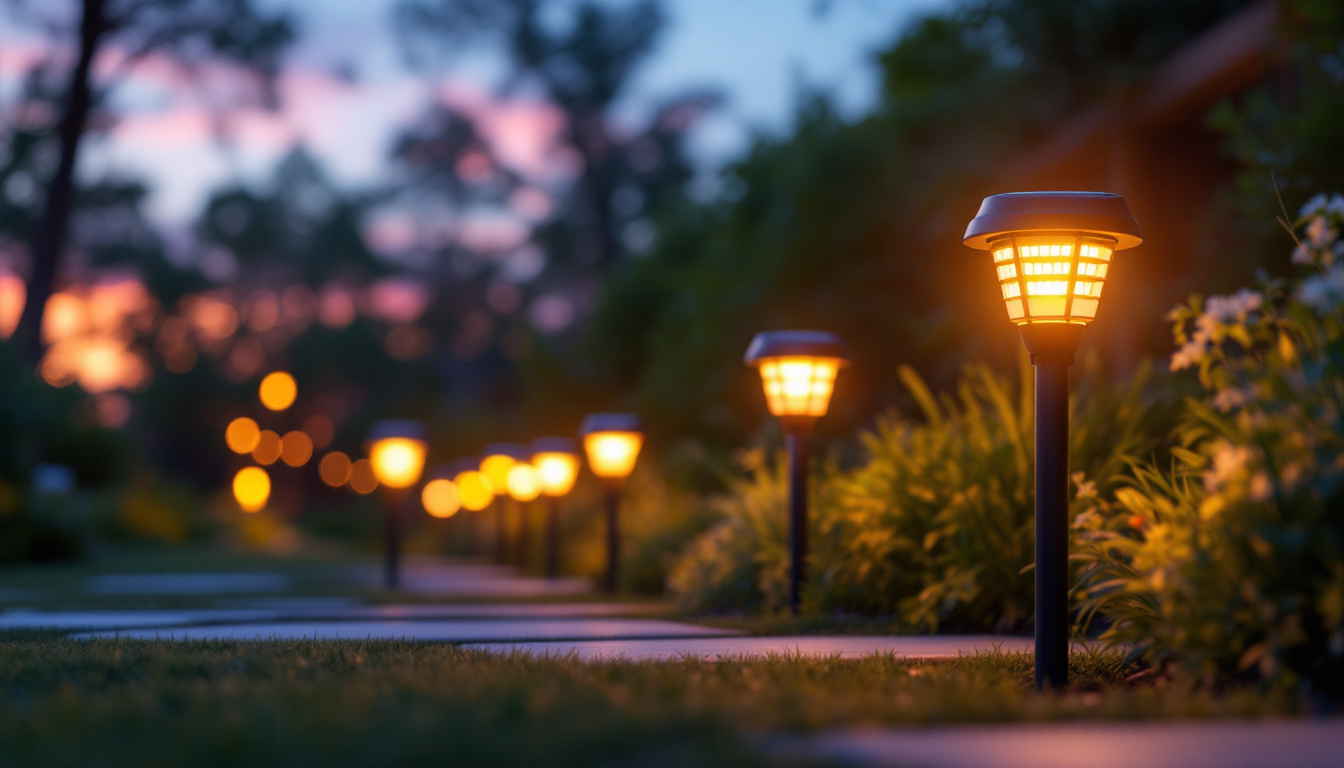
In the realm of outdoor lighting, motion lights have emerged as a vital component for both residential and commercial properties. For lighting contractors, understanding the significance of these fixtures is essential not only for enhancing security but also for improving energy efficiency and customer satisfaction. This article delves into the various reasons why motion lights are crucial for lighting contractors, exploring their benefits, installation considerations, and the future of outdoor lighting technology.
Motion lights are outdoor lighting fixtures equipped with sensors that detect movement within a specified range. When motion is detected, these lights automatically turn on, illuminating the area and providing visibility. This feature makes them particularly appealing for homeowners and business owners who prioritize safety and convenience.
There are several types of motion sensors used in outdoor lighting, each with its own advantages. Passive infrared (PIR) sensors are the most common, detecting heat emitted by moving objects. Ultrasonic sensors, on the other hand, use sound waves to detect motion, making them effective in a variety of environments.
Contractors should be familiar with these technologies to recommend the best option for their clients. For instance, PIR sensors are ideal for residential applications, while ultrasonic sensors may be more suitable for larger commercial spaces where comprehensive coverage is needed. Additionally, there are dual-technology sensors that combine both PIR and ultrasonic capabilities, offering increased reliability and reducing the likelihood of false alarms, which can be particularly beneficial in areas with frequent animal activity.
Motion lights offer a plethora of benefits that make them an attractive choice for clients. One of the most significant advantages is enhanced security. By illuminating areas when movement is detected, these lights deter potential intruders and provide peace of mind for property owners.
In addition to security, motion lights contribute to energy efficiency. Traditional outdoor lighting systems often remain on throughout the night, consuming unnecessary energy. Motion lights, however, only activate when needed, reducing energy consumption and lowering utility bills. Moreover, many modern motion lights come equipped with adjustable settings, allowing users to customize the sensitivity and duration of the light activation. This not only enhances their functionality but also allows homeowners to tailor their lighting solutions to suit their specific needs, whether it be for a quiet residential neighborhood or a bustling commercial area.
When it comes to installing motion lights, lighting contractors must consider several factors to ensure optimal performance and customer satisfaction. Proper placement, sensor sensitivity, and fixture selection are all critical elements that can impact the effectiveness of motion lighting systems.
Strategic placement of motion lights is crucial for maximizing their effectiveness. Contractors should assess the property layout and identify key areas that require illumination, such as entryways, driveways, and dark corners. Lights should be positioned at a height that allows for maximum detection range while minimizing the risk of vandalism.
Additionally, it’s essential to consider the surrounding environment. Trees, bushes, and other obstructions can interfere with sensor performance, leading to false triggers or missed detections. A thorough site evaluation will help contractors determine the best locations for installation. It’s also wise to think about the angle of the lights; positioning them to cover a wider area can help ensure that movement is detected from various directions, providing a more comprehensive security solution. Furthermore, contractors should take into account the aesthetic aspect of the installation, ensuring that the fixtures blend seamlessly with the property’s architecture while still serving their functional purpose.
Many motion lights come with adjustable sensitivity settings, allowing contractors to customize how responsive the lights are to movement. This feature can be particularly useful in areas with high foot traffic, where constant activity might lead to nuisance triggers. By fine-tuning the sensitivity, contractors can ensure that the lights activate only when necessary, enhancing user experience.
Moreover, understanding the specific needs of the property owner is vital. For instance, a homeowner with pets may require a different sensitivity setting compared to one who lives in a quiet neighborhood. Educating clients on how to adjust these settings post-installation can empower them to maintain their lighting systems effectively. Additionally, contractors should consider the time of day when the lights are most needed; some models allow for adjustments based on ambient light levels, ensuring that the motion lights only activate after dark, further reducing unnecessary triggers and conserving energy. This level of customization not only enhances the functionality of the lighting system but also contributes to a more sustainable approach to outdoor illumination.
For lighting contractors, providing exceptional customer service is paramount. Understanding the benefits and features of motion lights allows contractors to educate their clients, helping them make informed decisions. This knowledge not only enhances customer satisfaction but also fosters trust and loyalty.
When discussing motion lights with clients, it’s important to highlight their various features. Some motion lights come equipped with timers, allowing users to set specific activation durations. Others may offer adjustable brightness levels, enabling homeowners to customize their outdoor lighting based on their preferences. Additionally, many modern motion lights incorporate advanced technologies such as infrared sensors and dual-zone detection, which can significantly reduce false triggers while ensuring optimal security. By explaining these sophisticated features, contractors can help clients appreciate the value of investing in high-quality lighting solutions.
Contractors should also explain the importance of regular maintenance, such as cleaning the sensor lenses and checking for obstructions. By providing this information, contractors empower clients to take an active role in maintaining their lighting systems, ensuring long-term functionality. Furthermore, discussing the potential energy savings associated with motion lights can be a compelling selling point. Many clients may not realize that these lights can significantly reduce electricity costs by only activating when needed, thus contributing to both environmental sustainability and economic efficiency.
Every property is unique, and so are the lighting needs of each client. Contractors should be prepared to offer tailored solutions that meet the specific requirements of each project. This could involve recommending different types of motion lights based on the property’s layout or suggesting additional features like smart technology integration for enhanced control. For instance, integrating motion lights with home automation systems can allow homeowners to control their lighting remotely via smartphone apps, providing added convenience and security.
Moreover, understanding the aesthetic preferences of clients can also play a crucial role in the selection process. Some clients may prefer sleek, modern designs that blend seamlessly with contemporary architecture, while others might lean towards more traditional styles that complement classic home designs. By taking the time to understand and cater to these preferences, contractors can not only enhance the functionality of the lighting solutions but also elevate the overall appeal of the property. This personalized approach not only demonstrates a commitment to customer satisfaction but also reinforces the contractor’s reputation as a knowledgeable and reliable professional in the field.
The landscape of outdoor lighting is continuously evolving, with advancements in technology paving the way for smarter, more efficient systems. For lighting contractors, staying abreast of these developments is essential for maintaining a competitive edge in the industry.
Smart motion lighting systems are gaining popularity, allowing users to control their outdoor lighting through mobile apps or voice commands. These systems often integrate with home automation platforms, enabling seamless control over lighting schedules and settings.
Contractors who embrace smart technology can offer clients cutting-edge solutions that enhance convenience and security. Educating clients about the benefits of smart motion lighting can also open new avenues for business, as more homeowners seek to modernize their outdoor spaces.
As sustainability becomes increasingly important, energy-efficient outdoor lighting solutions are on the rise. LED motion lights, for example, consume significantly less energy than traditional incandescent bulbs while providing superior brightness and longevity.
Lighting contractors should prioritize energy-efficient options when recommending motion lights to clients. By emphasizing the long-term cost savings associated with LED technology, contractors can position themselves as environmentally conscious professionals who prioritize both performance and sustainability.
While motion lights offer numerous benefits, installation can present challenges that contractors must navigate. Understanding these challenges and developing effective solutions is key to successful project execution.
Environmental factors such as weather conditions and landscaping can impact the performance of motion lights. For instance, heavy rain or snow may obstruct sensors, leading to reduced functionality. Contractors should consider these factors when selecting motion lights and provide clients with guidance on appropriate placement and maintenance.
Additionally, landscaping can pose challenges. Overgrown bushes or trees may block the sensor’s line of sight, reducing its effectiveness. Contractors should advise clients on maintaining their outdoor spaces to ensure optimal performance of motion lighting systems.
Clients may have concerns regarding the reliability and effectiveness of motion lights, particularly in areas with high foot traffic or frequent animal activity. Addressing these concerns involves educating clients about the technology and its limitations.
Contractors can reassure clients by explaining how to adjust sensitivity settings and providing tips for minimizing false triggers. Offering a warranty or service guarantee can also instill confidence in clients, demonstrating a commitment to quality and customer satisfaction.
Outdoor lighting motion lights are an essential aspect of modern lighting solutions, offering enhanced security, energy efficiency, and convenience. For lighting contractors, understanding the importance of these fixtures is crucial for delivering exceptional service and meeting client needs.
By staying informed about the latest technologies, installation best practices, and customer education strategies, contractors can position themselves as trusted experts in the field. As the demand for outdoor lighting continues to grow, embracing motion lights will not only benefit contractors but also contribute to safer, more sustainable communities.
In summary, motion lights are more than just a trend; they are a vital tool for lighting contractors to enhance their service offerings and meet the evolving demands of their clients. By prioritizing education, customization, and technological advancements, contractors can ensure their place at the forefront of the outdoor lighting industry.
Ready to elevate your lighting projects with the latest in motion light technology? At LumenWholesale, we provide lighting contractors like you with the highest quality, spec-grade lighting products at unbeatable wholesale prices. Say goodbye to local distributor markups and hello to a vast selection of reliable, high-performance lighting that meets the strictest industry standards. Plus, enjoy the convenience of bulk buying with free shipping, ensuring you get the premium lighting you need at the best value — without any hidden fees or compromises. Don’t miss out on the perfect blend of quality, affordability, and convenience. Visit LumenWholesale now and discover how we can help you shine brighter in every project.

Discover the frequent pitfalls lighting contractors face with fluorescent lamp sockets.

Discover the latest trends in ceiling recessed lighting that every lighting contractor should be aware of.

Discover the advantages of 4-foot LED light bulbs without ballasts in modern lighting solutions.

Explore the transformative journey of solar battery lights in the lighting industry, highlighting their eco-friendly innovation, cost-effectiveness, and impact on sustainable living.